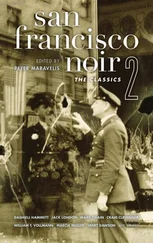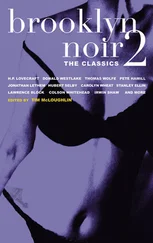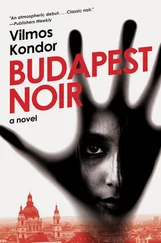Caroline Åberg - Stockholm Noir
Здесь есть возможность читать онлайн «Caroline Åberg - Stockholm Noir» весь текст электронной книги совершенно бесплатно (целиком полную версию без сокращений). В некоторых случаях можно слушать аудио, скачать через торрент в формате fb2 и присутствует краткое содержание. Город: New York, Год выпуска: 2016, ISBN: 2016, Издательство: Akashic Books, Жанр: Детектив, на английском языке. Описание произведения, (предисловие) а так же отзывы посетителей доступны на портале библиотеки ЛибКат.
- Название:Stockholm Noir
- Автор:
- Издательство:Akashic Books
- Жанр:
- Год:2016
- Город:New York
- ISBN:978-1-61775-297-1
- Рейтинг книги:3 / 5. Голосов: 1
-
Избранное:Добавить в избранное
- Отзывы:
-
Ваша оценка:
- 60
- 1
- 2
- 3
- 4
- 5
Stockholm Noir: краткое содержание, описание и аннотация
Предлагаем к чтению аннотацию, описание, краткое содержание или предисловие (зависит от того, что написал сам автор книги «Stockholm Noir»). Если вы не нашли необходимую информацию о книге — напишите в комментариях, мы постараемся отыскать её.
Copenhagen Noir
Helsinki Noir
Stockholm Noir — читать онлайн бесплатно полную книгу (весь текст) целиком
Ниже представлен текст книги, разбитый по страницам. Система сохранения места последней прочитанной страницы, позволяет с удобством читать онлайн бесплатно книгу «Stockholm Noir», без необходимости каждый раз заново искать на чём Вы остановились. Поставьте закладку, и сможете в любой момент перейти на страницу, на которой закончили чтение.
Интервал:
Закладка:
As I said, it really wasn’t easy sleeping there. I would lie down on a lump of old clothes that smelled bad. I heard strange sounds in the supposedly empty building. I knew some homeless men lived here and they were restless at night. They had it rougher than I did; they slept right on the broken glass and trash. It was a real hell. They’d light fires in old tin cans, which made me nervous. They also snored. The most alarming sounds, however, were the determined footsteps coming up the stairs — and the knocking on my door. Then I’d grab my bag containing my ten-year-old Hasselblad 1000F. I’d gotten it cheap when Hasselblad released the 50 °C and all the professional photographers dumped their old 1000Fs — their shutters were loud and unreliable.
The sound is easy to imitate: cla-DUM-hiss . If that last hiss did not come, the shutter had frozen, which meant the shoot was over. I also had two magazines for 120 film, a Linhof tripod, and a Lunasix light meter. My camera bag was always packed so I could take off whenever I wanted. My only other possessions were a thermos and the clothes on my back.
The neighborhood around my building, with all its condemned and half-demolished buildings, did not invite strolls at night. I’d read that slums incited people to crime — a belief the psychologists and doctors of Sweden had held for a long time. According to them, this is how it worked: in these slum quarters, children and young people ran around without control, they’d shoplift, fight, and vandalize. A certain doctor by the name of Beijerot kept trumpeting this on television debates and in newspaper articles. Slums are vectors of criminality, he believed. The obvious cure was to tear them all down. I think he confused cause and effect; a rather common problem then, just like today.
Then a new concept came along to replace the old one: modernity. The city politicians, listening to the doctors, got caught up in the spirit of the times. Old buildings needed to be torn down because they were in the way. Highways were to be built through the city, opening it up to light and fresh air.
One night, smoke came in from under my door. I have never woken so fast in my life. I rushed down the stairs to locate the source. Broken furniture and heaps of old newspapers were burning in the stairwells of the fourth and fifth floors. I grabbed some fire buckets filled with sand (complete with small spades), part of the obligatory equipment of any office in those days. It was possible to put out small fires with them, which is what I did. I was coughing and sweating, my face and arms covered in soot, my clothes torn ragged by the time I got back up to the sixth floor. I opened all the windows I could and stood there for a long time, breathing in the city’s cool night air. I still had hot water left in my thermos, so I went to make coffee in another room. I used freeze-dried coffee, which I liked a lot back then. I also wanted to appear to be modern.
In those days, the old patriarchal society was falling apart. Changes in trade and manufacturing during the end of the fifties meant that many men (and it was mostly men who worked outside the home then) were losing their jobs. They comforted themselves with alcohol and, in their frustration, sometimes they beat their wives and kids. However, a new social structure was coming into being. Women started to demand, and get, divorces. If there were children, the women had the right to keep the apartment, so their former spouses were out on the street. Some of those became alcoholics with no other place to live but the street and they often met an early death. Perhaps it was a just punishment for treating their wives and kids so brutally.
When I was young, I loved cars. I had a Ford Prefect, one of the worst vehicles ever made, which was a somewhat larger version of the Ford Anglia, also just as bad. The Prefect was a four-door and I’d bought it one day when I’d managed to scrape together eighty kronor. It didn’t last long. It wasn’t Mr. Frost’s fault. This homeless guy had chosen to sleep in its backseat one chilly night. This car was so tall and narrow it had gotten the nickname “Hot Dog Stand.” The reason Mr. Frost (yes, that was really his name) could sleep there at all was because he was constantly exhausted. Whenever I’d go on an errand, he would be there in the backseat.
We didn’t talk much. I’d try to give him food, sandwiches, but he’d refuse them. He would just vomit up all real food. His alcoholism was so far advanced that the only calories he got were from sweet strong wine. He found it himself. I did not want to go to the State Liquor Store and get it for him. I looked young, so I had trouble buying alcohol. The cashiers mistakenly believed I was just sixteen with a fake driver’s license. I was, in fact, ten years older. Anyway. Once I was driving up the Western Bridge heading south when Mr. Frost got scared and started screaming. Smoke had begun to fill the inside of the vehicle, and I quickly opened the retractable front windshield, a feature not found on later models. (This one was from 1953.) Air streamed in but it made no difference. Cutting off the engine while still going up the bridge would be a mistake, I thought, but as soon as we crested the top, I let the car roll down to the Långholmen exit. Thanks to the fact that we still drove on the left in those days, I was able to pull off immediately and I parked the still smoking car on a piece of lawn. (Right-hand traffic was introduced three years later, even though a large majority of the Swedish population had voted against it.) When I opened the hood, I saw that a bit of rusty metal had fallen on the battery and shorted it out.
I abandoned the car where it was, and Mr. Frost and I hoofed it, somewhat unsteadily, through the city (images of destruction beneath white powdered snow) back to Drottninggatan 37. I let him in, and he disappeared immediately into the office of the former shoe store. Afterward, I stopped locking the front door. I was never sure how many individuals this saved from freezing to death on the streets; at least they could have a roof over their heads.
In the forties, Arne Wahlberg started getting migraines whenever he had to focus his camera. When I found that out, I began to call it the Wahlberg Disease. There was just one way to focus a camera in those days: you had to slowly turn the lens. On larger cameras, you’d expand or contract the bellows using a rack-and-pinion system until the image appeared in focus on the ground-glass screen.
As a photographer myself, with the same tendency to get migraines, this wasn’t surprising. Straining the eye to focus the camera could set them off. You never get used to migraines. My siblings had them and so did my mother. Still, you got used to one thing: the nervous anticipation that, all of a sudden, it could go bang inside your brain. So I felt fine with the idea that the man who’d been here before me had suffered from the same illness. In the end, Wahlberg’s migraines forced him to give up photography. I hoped I would not be stricken by the same fate.
I slept so uneasily on Drottninggatan, I would wake to make nightly rounds. I soon became familiar with each and every corner of the building so that darkness was never a problem. The shoe store and its offices on the ground floor. The import firm on the second floor. The former lawyer’s offices on the third floor. The strange firm on the fourth floor — I never figured out what it had been. And “mine” on the sixth floor. All of it a labyrinth. Each room had its own smell.
Everywhere, except on my floor, were sleeping men. The rumor of an unlocked building spread and so the number of homeless men was growing. Bundles of men wrapped in blankets and rags. Some of them talked nervously in their sleep. Others seemed to plunge straight into unconsciousness. Mr. Frost was one of the latter. I felt I was being a good person. By leaving the front door unlocked, these individuals were saved from sleeping outdoors. One night, I even counted them: there were thirty-seven.
Читать дальшеИнтервал:
Закладка:
Похожие книги на «Stockholm Noir»
Представляем Вашему вниманию похожие книги на «Stockholm Noir» списком для выбора. Мы отобрали схожую по названию и смыслу литературу в надежде предоставить читателям больше вариантов отыскать новые, интересные, ещё непрочитанные произведения.
Обсуждение, отзывы о книге «Stockholm Noir» и просто собственные мнения читателей. Оставьте ваши комментарии, напишите, что Вы думаете о произведении, его смысле или главных героях. Укажите что конкретно понравилось, а что нет, и почему Вы так считаете.












